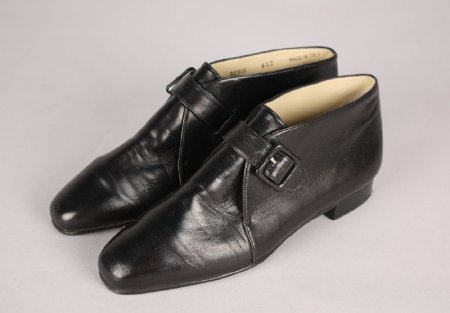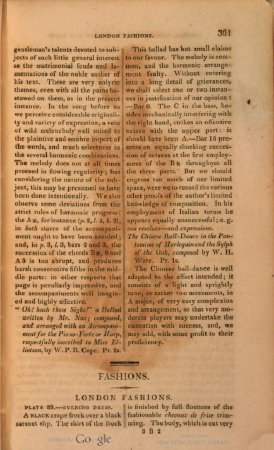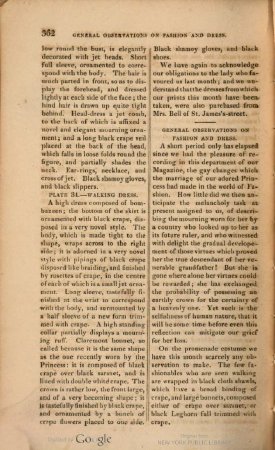Object ID:
2013.4.50
Label/Maker:
Ackermann, Rudolph
Date:
December 1, 1817
Object Details:
In this hand-painted, early 19th century Ackermann illustration, a woman is depicted leaning on a white pillar in a black evening gown and long sheer veil. This pairing hints at the development of mourning costume, where appropriate attire was subject to specific fashion etiquette. Queen Victoria had a significant influence on this developing trend where clothing was associated with grief and respect. After the death of her husband, Prince Albert in 1861, Queen Victoria wore ebony clothing until her own death in 1901. Full mourning lasted one year and consisted of attire made of dark fabrics without embellishment or jewelry. A woman in full mourning wore a veil to cover her face when she left the house.20 This particular fashion plate features an off-the-shoulder neckline, trimmed with a series of small ruffles that extend across the bust and sleeves. An empire waistline flows down into a long skirt hemmed just above the ankles, revealing ballet flats. Mimicking the adornment on the petit bodice, the bottom of the dress is trimmed with four layers of black ruffles. The hair is decorated with a jet comb and headband, finished with a long crêpe veil. A noir and silver necklace with a cross and long elbow-length charcoal gloves holding a handkerchief provide an element of intentional melancholy.
Reference:
Cultural Connections:
A fascination with witches and their dark mythology was evident in cult films of the 1990s such as The Craft (1996) and Practical Magic (1998) that promoted a grim fascination with moodily morbid themes.21 This 90s aesthetic made its way into fashion, bringing forth a dark feminism supported by flowing skirts and dresses, wide-brimmed hats, and certain period details like buckles on shoes. Both the Ackermann illustration and the shoes transfix the mind to create a bewitching backstory for the wearer. Mood and attitude burst forth from both objects as the viewer is treated with the suggestion of mourning that whirls around in the continuation of purputially ominous themes.
Reference:
20 "Mourning Dress," The Metropolitan Museum, accessed November 25, 2020. https://www.metmuseum.org/art/collection/search/159230.
21 Samantha Sutton, "They Don't Make Witch Movies Like They Did in the 90s," Cosmopolitan, July 9, 2020. https://www.cosmopolitan.com/entertainment/movies/a24041947/best-witch-movies/.
21 Samantha Sutton, "They Don't Make Witch Movies Like They Did in the 90s," Cosmopolitan, July 9, 2020. https://www.cosmopolitan.com/entertainment/movies/a24041947/best-witch-movies/.




